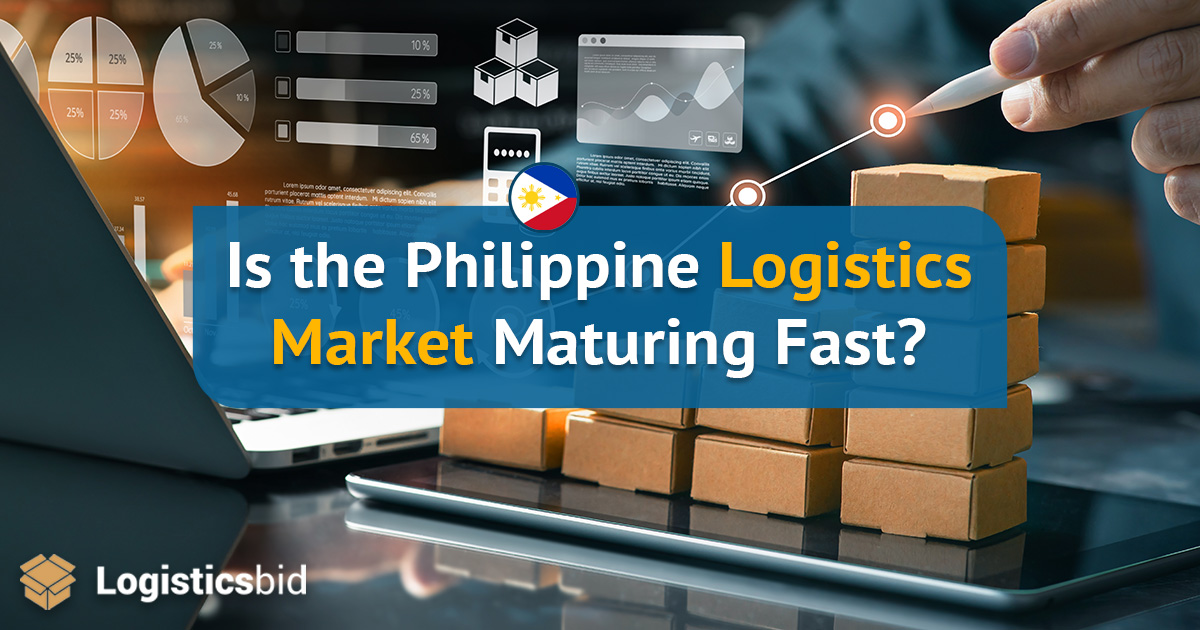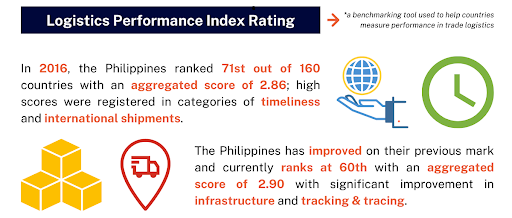
The Philippine logistics is undergoing significant evolution amidst a backdrop of economic growth, infrastructure development, and digitalization. With strategic geographic positioning and government-driven infrastructure plans, this industry faces promising prospects as well as daunting challenges. Companies must swiftly evolve to stay competitive in this burgeoning market.
Evolving Logistics Environment in the Philippines
The Philippines’ unique geographical position has historically established it as a crucial Southeast Asian trade hub. Recent government initiatives, such as the “Build, Build, Build” program initiated under the Duterte administration and continued as “Build, Better, More” (BBM) under President Ferdinand Marcos Jr., are pivotal in transforming the nation’s infrastructure landscape. The BBM program alone allocates ₱1.196 trillion in 2023 to enhance connectivity and foster economic growth (Government Data). Despite these efforts, logistical inefficiencies persist, affecting growth and highlighting the need for industry adaptation.
Key Data Point: Reports indicate that investments in infrastructure are expected to boost the logistics market by up to 25% over the next five years, according to the World Bank.

Supply Chain Fragmentation
A core challenge lies in the fragmented logistics environment. Many businesses continue to rely on manual processes and outdated systems, causing inefficiencies. Despite the rise of cloud-based logistics systems, digital adoption remains uneven, particularly among small and medium-sized enterprises (SMEs).
A survey by Frost & Sullivan (2022) discovered that only 40% of SMEs in the Philippines have integrated digital solutions in their supply chain processes.
Regulatory and Infrastructure Barriers
Changing customs regulations and tax policies pose additional complexities. Meanwhile, infrastructure bottlenecks, notably at ports and urban areas, disrupt supply chain efficiency despite ongoing advancements.
The Asian Development Bank reports that port congestion costs the economy up to $3 billion annually due to delays and inefficiencies.
Proactive Industry Strategies for Future Growth
To align with a maturing market, logistics businesses must adopt transformative strategies that integrate digital innovation and sustainable practices.
Digital Transformation
Adopting cloud-based platforms and AI-driven analytics can significantly reduce errors and streamline operations. Automation is no longer optional but essential.
Implementing real-time data analytics could decrease delivery timelines by 15%, as evidenced by a case study in Harvard Business Review.
Workforce Development
Equipping employees with digital and supply chain management skills is crucial for improving service delivery.
Companies that invested in employee digital training reported a 20% increase in operational efficiency, according to a 2023 study by PwC.
Sustainable Logistics Practices
With the global shift towards greener logistics, adopting sustainable solutions is critical. This involves investments in electric vehicles, optimized route planning, and green warehousing.
A logistics provider in Manila reported cutting carbon emissions by 30% after transitioning to electric vehicles, as highlighted by the Climate Reality Project.
Philippine Logistics Companies: Pioneers and Pillars of a Maturing Market
As the market matures, logistics companies are not only crucial facilitators of trade and commerce but also pivotal in driving economic growth and technological advancement. This article will explore the vital role these companies play and how they are responding to the current challenges of a rapidly developing environment.
The Role of Logistics Companies in the Philippines
Logistics companies in the Philippines serve as the backbone of the nation’s supply chain, connecting producers with consumers both domestically and internationally. They manage the movement of goods through a complex web of processes, including transportation, warehousing, inventory management, and information processing. Given the country’s archipelagic nature, logistics firms are instrumental in ensuring efficient and reliable access to markets.
Key Players in the Market
Several notable logistics companies operate in the Philippines, each contributing to the industry’s development with their unique strategies and innovations:
 |
LBC Express Holdings, Inc.: With a strong presence in domestic and international shipping, LBC has long been a leader in courier services. The company has increasingly embraced digital transformation to improve service delivery. |
 |
2GO Group, Inc.: Known for its shipping services, 2GO has expanded into integrated logistics and supply chain solutions, leveraging technology to streamline operations. |
 |
DHL: Part of a global network, DHL provides extensive expertise in international logistics, emphasizing sustainability and innovation in its operations. |
 |
Transportify: A relatively new player that has quickly gained a footprint by offering cost-effective FTL and LTL solutions for mostly business deliveries, focusing on agility and customer service. |
Service Expansion and Technological Integration
Logistics companies are advancing to provide expanded services that cater to growing consumer demands:
- Enhanced Delivery Solutions: Logistics firms are adopting sophisticated tracking systems and route optimization technologies to ensure timely deliveries, a necessity given the rising e-commerce market, which Statista projects will grow by 16% annually through 2025.
- Cloud-Based Platforms: Companies are transitioning to cloud-based management systems, allowing for real-time data access and improved coordination across the supply chain.
Regulatory Navigation
Navigating the frequent changes in trade regulations and customs policies can be burdensome. Companies are adopting digital customs solutions and engaging with regulatory bodies to stay ahead of shifts (International Trade Administration).
Infrastructure Dependency
Many logistics firms depend on ongoing improvements to national infrastructure. While companies like 2GO benefit from modernized port facilities, Colliers International highlights the continued need for investment in road and bridge construction to alleviate urban congestion.
The Future of Logistics Companies in a Maturing Market
For logistics companies in the Philippines, the future is laden with both opportunities and challenges. Those who embrace digital innovation and sustainable practices will find themselves leading in market competitiveness. By expanding service capabilities, forming strategic partnerships, and investing in workforce development, these companies can maintain a critical edge.
As noted, the real bottleneck in Philippine logistics lies in digital adoption, not just infrastructure.
